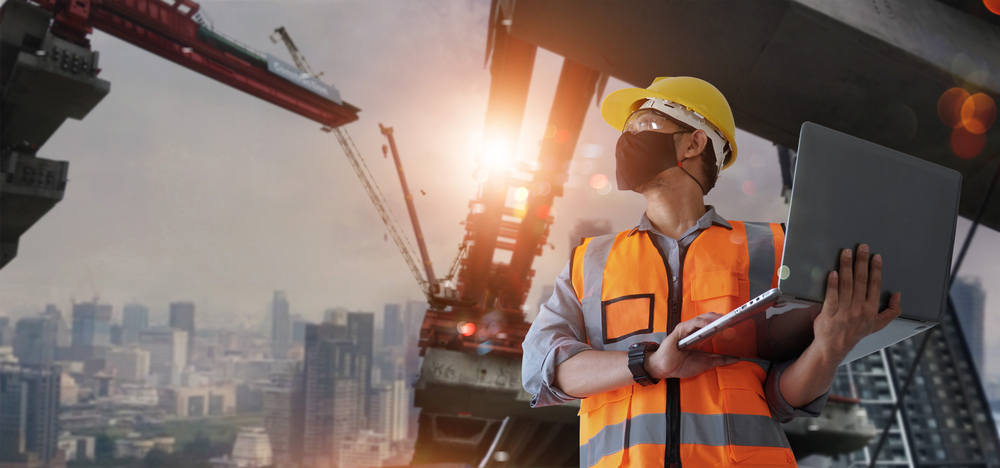Automation for the people
AI-powered tools provide convenience and cost savings, and can also enhance predictive maintenance in larger residential properties, such as condominium buildings and planned communities

The morning sun rises, and the day begins with the familiar sound of the alarm. With a simple command to your AI-powered home automation system, it falls silent, the curtains open, the temperature adjusts, and the bathroom lights turn on.
As you head downstairs, the smart mirror displays the latest news and weather updates, while the coffee machine brews a pot. The fridge reminds you to add milk to your shopping list. Tucking into breakfast, the AI assistant plays suitably lively tunes. And when it’s time to leave, the system turns off lights and appliances as you walk out the door.
Welcome to the future of home automation, where AI technology permeates our daily routines, promising to make life easier and more convenient.
Recent years have seen rapid advances in smart home features thanks to developments in AI technology. These systems already perform an array of tasks that traditionally require human intervention, such as adjusting temperature and humidity levels, controlling lighting and appliances, and managing energy consumption.
“AI-powered smart home devices can interact and communicate with each other, allowing them to learn human habits,” explains Zac Amos, a tech writer focused on AI and automation. “Data collected by AI smart home technologies can predict user behaviour and even develop situational awareness. In other words, it can automate tasks based on a homeowner’s preferences.”
Indeed, the market for smart home hardware and software has soared in recent years. Global research and consultancy firm Grand View Research recently projected it will reach an estimated value of about USD445 billion by 2030.

AI-powered home automation is particularly beneficial in hot and humid climates like Asia, where these systems optimise the temperature and humidity levels to create comfortable and energy-efficient homes. For example, they can turn on the air-conditioning in the living room when people are present and turn it off when the room is empty to help reduce utility bills. It can also be integrated with other smart devices in the home, such as smart lighting and smart appliances, allowing homeowners to control all aspects of their environment with a single app or voice command.
Home automation not only provides convenience and cost savings but can also enhance predictive maintenance in larger residential properties, such as condominium buildings and planned communities. By integrating home automation systems with AI-powered predictive maintenance tools, property managers can remotely monitor and manage various building systems, such as HVAC, lighting, and security.
For instance, if an alert indicates a system issue in a condominium building, property managers can quickly assess the problem using predictive tools on their smartphones or computers. They can also remotely control the building’s HVAC system to identify the issue and quickly dispatch a maintenance team to resolve it.
“Human intervention is still a vital part of keeping these systems functional, but more automation and selfcorrective actions are probable in the future,” says Michael Zucchero, a consultant, and executive at ISS, a global facility management services company.
“Although people will likely always be a part of the process, the development of new technologies can help technicians and facility managers perform their duties and stay safe while doing so, providing excellent outcomes for both facility companies and their clients.
“The increase in the effectiveness of AI and machine learning has the potential to revolutionise how building maintenance is performed.”
Despite the appeal of emerging trends like home automation and predictive maintenance, some experts remain cautious about the reliance on data and monitoring, as well as the challenges associated with personalisation.

According to Jordan Kostelac, founder of deploy, a decentralised scout network, and former Asia Pacific director of proptech for JLL, home automation is particularly difficult to personalise due to the unique ways in which each household utilises its space. He believes that the products and technologies for this market need to meet much higher quality standards to appeal to a wider consumer base.
Regarding predictive maintenance, Kostelac argues that the current excitement may be premature, saying, “It’s one of those terms that industry pundits love to talk about but can never really define. It overpromises and underdelivers like Elon Musk stating that self-driving cars are ‘just a year away’ every year since 2016. Or how offices are going paperless any day now.”
Instead, he proposes that a more realistic ambition for the property and facilities management industry is responsive maintenance, which can help managers react to issues in buildings in much shorter timeframes. He explains that most building issues are subject to the “pothole paradox”, where small issues are often overlooked until they become much larger problems. However, AI can effectively help overcome this and make managers of properties able to react in much shorter timeframes.
To demonstrate the potential of this approach, Kostelac describes an AR application he worked on that provides security and inspection staff with real-time data input, enabling the application to gather necessary visual data to train machine vision models to automatically detect anomalies with more understanding. This approach can help overcome the reporting issue of the pothole paradox, allowing managers to react more quickly to issues without human intervention.
Beyond its end-user applications, AI continues to transform working practices in the construction sector. One notable development is the use of predictive analytics in project planning. By crunching data from past projects, AI algorithms can predict how much time, money, and resources will be required for future developments, helping managers make more informed decisions and plan for potential challenges.

AI-powered project management tools are also playing a crucial role in enhancing collaboration and communication among project partners, including clients, architects, engineers, and contractors, allowing them to share and work on project information in real-time.
Many developers in the region, including GuocoLand in Singapore, have already adopted such tools as Common Data Environment (CDE) and Document Management Systems. GuocoLand is also working with Lian Beng Construction and start-up Millipede to develop a construction progress tracking and inspection app, which leverages AI to improve workplace safety and efficiency.
“We hope to see GuocoLand’s digitalisation drive create a digital ecosystem that provides a seamless end-to-end journey for building processes, boosting the need for technology companies to collaborate and develop dynamic and integrated innovations,” Jane Ong, the developer’s digitalisation committee lead, says. “The transformation of Singapore’s built environment sector requires all organisations in the ecosystem to play their part.”
The industry is already witnessing similar calls for collective action, spurred by trends such as home automation, predictive maintenance, and the use of AI to enhance project management. Indeed, these advancements are poised to revolutionise how we live, work, and build. But like with any tool, how they are wielded, and the rules put in place to guide their development and deployment, will ultimately determine their benefits—and risks—as the real estate sector collides with the future.
This article was originally published on asiarealestatesummit.com. Write to our editors at [email protected].
Recommended
Meet the architect transforming Asia’s retail spaces with nature-inspired designs
David Buffonge, the cofounder of Hong Kong-based Lead8, has strong opinions on how to improve built environments around Asia
6 sights to check out in Siem Reap, Cambodia
Cambodia’s “temple town” is bolstering its touristfriendly attributes with new infrastructure and residential developments
Inside Asia’s luxury resort residences that are redefining high-end living
Asia’s resort residence market is witnessing a shift as investors eye larger, multifunctional units
How joining BRICS could give Thailand and Malaysia a new economic edge
Thailand and Malaysia are eyeing membership in the bloc of emerging nations






